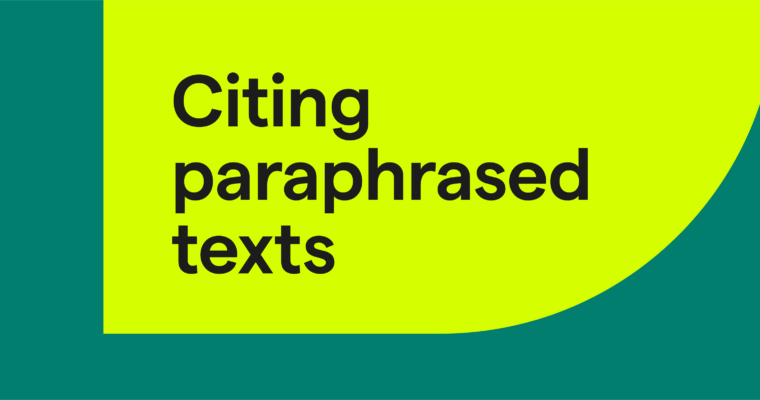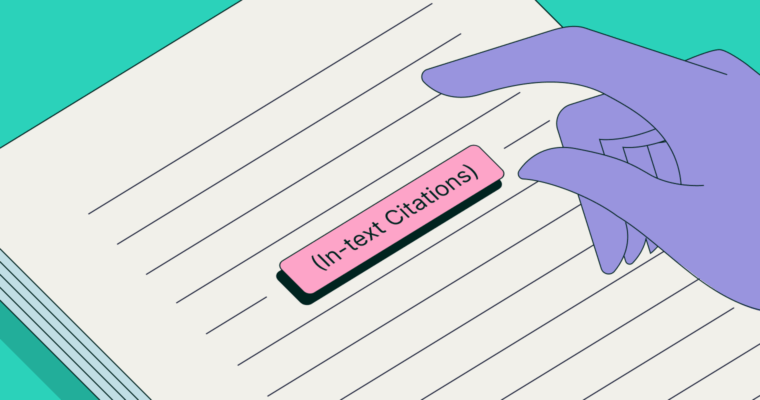
Harvard-style referencing may seem intimidating—after all, Harvard (the university) is not known for being easy. But the truth is, the Harvard citation format is fairly straightforward. Once you get the hang of it, using it will become second nature.
In this article, we teach you the ins and outs of Harvard-style referencing so that you can make it a part of your academic writing. We’ll cover how to make a Harvard reference list and where to use parenthetical citations. We’ll also share other tidbits to help you write perfect citations every time.
What is Harvard-style referencing?
Harvard-style referencing is a type of international citation format for academic papers, with a focus on parenthetical citations. It is commonly used for educational assignments like research papers, as well as scientific papers.
Don’t let the name fool you though—Harvard-style referencing is not officially associated with Harvard University, although it was first seen in the work of someone affiliated with the school. It was (likely) first used by Edward Laurens Mark, a director of the zoological laboratory at Harvard. More interestingly, Mark’s paper, and Harvard-style referencing in general, is probably the first recorded use of the parenthetical citation as a whole.
Harvard-style referencing vs. MLA, APA, and Chicago
The Harvard citation format is in the same league as the other popular styles for academic writing: APA format, MLA format, and the Chicago Manual of Style format.
Because it uses parenthetical citations with the author’s last name (surname) and the date of publication, the Harvard citation format is considered an author-date format. As such, it’s similar to APA style, although there are some minor differences in the content and punctuation of the full citation.
Harvard citation format: In-text citations
The Harvard citation format uses parenthetical author-date citations embedded within the text. In this style, the citation places the last name of the author and the year of publication within parentheses. Keep in mind, you’ll also need a full citation at the end of the paper in the reference list.
In-text citations come after a sentence, clause, or paragraph using that source’s information. The citation comes at the end of a passage but before punctuation marks like periods or commas.
The Harvard citation format uses the author’s last name and the year of publication. If the page number is relevant, as in citations for a direct quote, you can include it with the abbreviation p., for one page, or pp., for a page range.
Humans use one type of thinking for instinctive, emotional decisions, but a different type of thinking for slower, more strategic decisions (Kahneman, 2011).
“The attentive System 2 is who we think we are [ . . . ] but it often endorses or rationalizes ideas and feelings that were generated by System 1” (Kahneman, 2011, p. 406).
Like other styles, the Harvard citation format also allows narrative citations, where the author and/or year is mentioned directly in the text. In this case, repeating that information in the citation is redundant, so it can be omitted. In other words, the parenthetical citation should include only information not mentioned in the text.
As Daniel Kahneman says on page 406, System 2 “often endorses or rationalizes ideas and feelings that were generated by System 1” (2011).
Harvard citation format: Reference list citations
Like most academic writing formats, Harvard-style referencing requires a bibliography at the end of the work that contains full citations for all sources used. This bibliography is known as the reference list, and it’s similar to APA’s reference page and MLA’s works cited page.
Each source entry contains (if applicable):
- the name of the author, inverted with the last name first and with an initial for the first name
- the year of publication
- the full title, including subtitles
- the edition number
- the place of publication (usually a city)
- the name of the publisher
- the name of the journal, with volume and page numbers
- the URL and accessed date for online materials
Each piece of information is presented in a specific way, with unique rules for punctuation and capitalization. You can see examples of the Harvard citation format below.
All entries are placed on the reference list page in alphabetical order by the author’s last name. Multiple works from the same author(s) are organized by date. The reference list should be a separate piece of paper and double-spaced, with the title “Reference List” at the top.
Harvard citation format for multiple authors
Most style guides have their own particular rules about citing sources with multiple authors, and Harvard-style referencing is no different. We’ve already explained the guidelines for sources with one author, but here are the rules for two or more authors. If you’re including the page numbers, you can simply add a comma after the year and write it there, inside the parentheses.
| Parenthetical citation | Example | |
| Two authors | (Last Name and Last Name, Year) | (Swift and Alwyn, 2017) |
| Three authors | (Last Name, Last Name and Last Name, Year) | (DeWitt, Ritter and Somers, 1977, p. 33) |
| Four or more authors | (Last Name et al., Year) | (Mark et al., 1991) |
Keep in mind that, as with other narrative citations, if you mention all the authors in the text itself, you can omit them from the parenthetical citation.
Harvard referencing: Book
Book citations in the reference list follow a very specific formula. Pay close attention to the punctuation and italics in the following example.
Last name of author, Initial of first name. (Year of publication) Title in sentence case. #th edn. Place of publication: Publisher name.
Here’s a specific example of Harvard referencing for books with the source used above:
Kahneman, D. (2011) Thinking, fast and slow. 2nd edn. New York: Farrar, Straus and Giroux.
Harvard referencing: Article
For journal articles in Harvard-style referencing, you need to include the same information as with other sources, plus the journal’s name, volume, issue, and page numbers. If you read the article online, you also need the URL or DOI and the date you accessed it, plus the word online written in brackets.
Here’s the formula for citing articles in Harvard style:
Last name, Initial. (Year of publication) ‘Title of article,’ Title of journal, volume #(issue #), #–# [online]. Available at: URL or DOI (Accessed: Day Month Year).
Put it all together, and your full citation should look like this:
Lu, T. and Chen, F. (2011) ‘Multiwfn: A multifunctional wavefunction analyzer,’ Journal of Computational Chemistry, 33(5), pp. 580–592 [online]. Available at: https://onlinelibrary.wiley.com/doi/abs/10.1002/jcc.22885 (Accessed: 27 August 2023).
Remember that if you use a print source, you don’t need the “online” tag, URL, or access date.
Lu, T. and Chen, F. (2011) ‘Multiwfn: A multifunctional wavefunction analyzer,’ Journal of Computational Chemistry, 33(5), pp. 580–592.
Harvard referencing: Website
Websites in Harvard-style referencing are fairly simple, especially compared to other types of sources. For publication information, you need only the name of the web page and the author (or organization that published it). However, you also need to include the URL and the date you accessed it, as well as the word online in brackets.
Plug in your source’s information to this formula to cite websites in Harvard style:
Last name, Initial. / Name of organization. (Year of publication) Title of page/site [online]. Available at: URL (Accessed: Day Month Year).
A real-life citation example would look like this:
Grammarly. (2023) A guide to in-text citations: APA, MLA, and Chicago [online]. Available at: https://www.grammarly.com/blog/in-text-citations (Accessed: 2 August 2023).
Harvard-style referencing FAQs
What is Harvard-style referencing?
Harvard-style referencing is a type of international citation format for academic papers, with a focus on parenthetical citations. It is commonly used for educational assignments like research papers, as well as scientific papers.
What are the parts of the Harvard citation format?
For in-text citations, Harvard-style referencing follows an author-date format, which uses the author’s last name and the year of publication within parentheses. This parenthetical citation goes at the end of each sentence, clause, or paragraph with the source’s information. At the end of the paper or work, you also need a reference list with a full citation for each source.
How do you write a full citation in Harvard-style referencing?
In the reference list at the end of your paper or work, you need a full citation for each source with the author’s name, year of publication, and title. Depending on the type of source, you may also need the publisher’s name and location, the URL or DOI, and the date you accessed the source for online documents. Journal articles also require the volume, issue, and page numbers.





